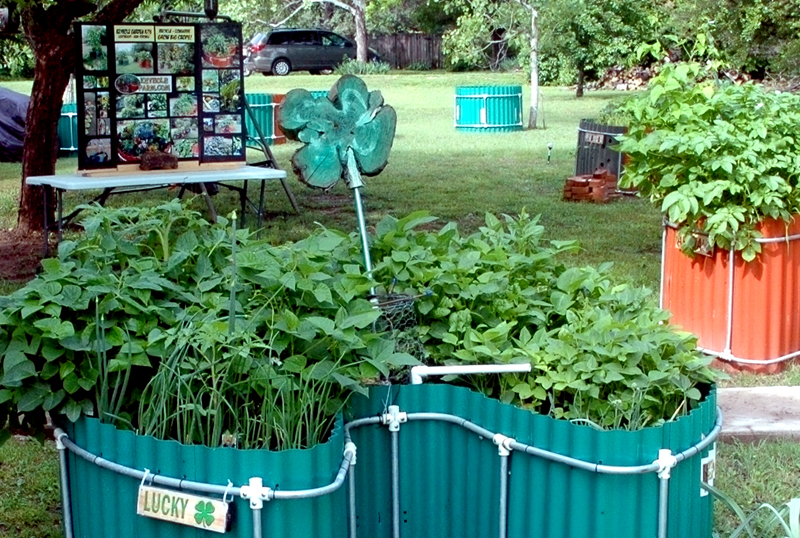 Dr. Deb Tolman’s annual keyhole garden tour brought many guests to Keyhole Farm on April 25 and 26 to see, first-hand, our gardens. So far this year we are extremely pleased with the growth of our plants. Most of the seeds went in on March 8, so by tour time they had been in the ground just a little over six weeks.
Dr. Deb Tolman’s annual keyhole garden tour brought many guests to Keyhole Farm on April 25 and 26 to see, first-hand, our gardens. So far this year we are extremely pleased with the growth of our plants. Most of the seeds went in on March 8, so by tour time they had been in the ground just a little over six weeks.
Some had already begun producing, like beans and tomatoes, with others on the verge.
 Here are various photos taken that day of some of the keyholes. Just click on the image to enlarge, then click off of it to reduce.
Here are various photos taken that day of some of the keyholes. Just click on the image to enlarge, then click off of it to reduce.
The great thing about having people visit our gardens is that, first, it’s good to meet new folks; second, I usually learn something since many of the visitors are Master Gardeners who through experience and training tell me what works for them in the unique challenge of raising one’s own crops; and third, it is satisfying to have new gardeners spellbound by our successes and are eager to develop their own keyhole gardens.
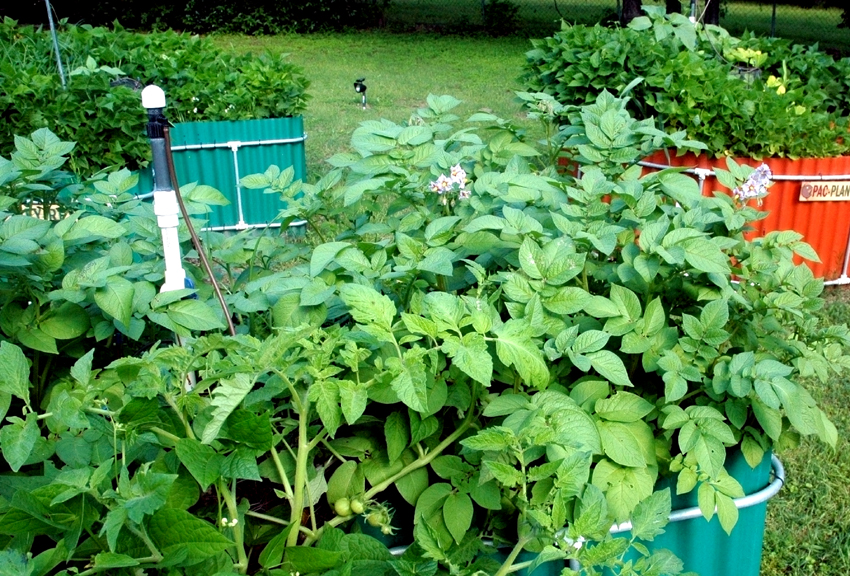 I definitely notice plant growth every day, often twice a day if I separate a morning and afternoon excursion into the mass of gardens.
I definitely notice plant growth every day, often twice a day if I separate a morning and afternoon excursion into the mass of gardens.
If the usual happens, by mid-to-late May I will have plants overflowing everywhere in the midst of the gardens and be growing some magnificent crops.
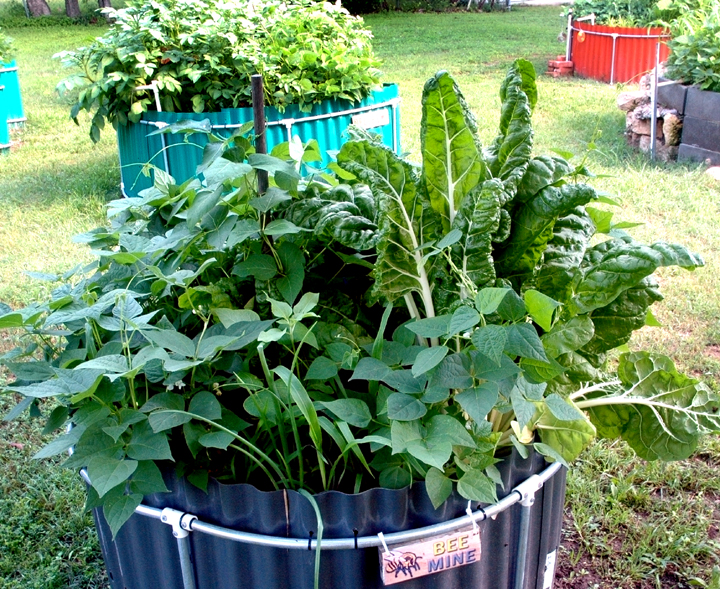 Some of the things discussed during the tour dealt with dimensions and capabilities of the kits that we offer, but a lot involved the very fast development of our crops. Since I realize that some patrons might consider sunflowers as weeds, I am quick to point out that I like to grow the mammoth variety (8 to 10 ft. tall), one or two in each garden, near the center for a variety of reasons: yellow is my favorite color, the heads attract bees who are our friends, the heads attract birds who eat on the seeds while monitoring for grasshoppers and leaving my tomatoes alone (usually), and the big leaves extruding from the stalks help in hot weather to provide a little intermittent shade for the crops below them.
Some of the things discussed during the tour dealt with dimensions and capabilities of the kits that we offer, but a lot involved the very fast development of our crops. Since I realize that some patrons might consider sunflowers as weeds, I am quick to point out that I like to grow the mammoth variety (8 to 10 ft. tall), one or two in each garden, near the center for a variety of reasons: yellow is my favorite color, the heads attract bees who are our friends, the heads attract birds who eat on the seeds while monitoring for grasshoppers and leaving my tomatoes alone (usually), and the big leaves extruding from the stalks help in hot weather to provide a little intermittent shade for the crops below them.
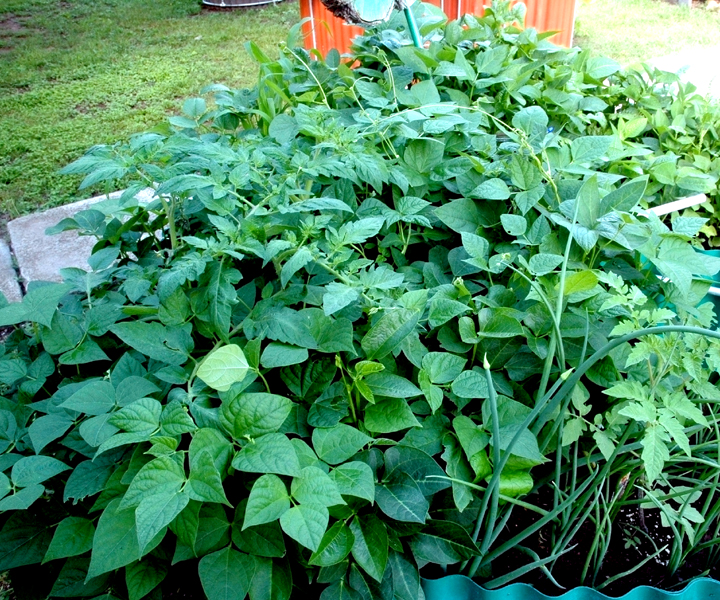 I explained how I was able to use carbonated water to germinate black-eyed pea seeds early and then put a little sand around them when planting, which has apparently worked quite well. I usually plant these in May because the seeds often rot out if planted too early. This year, I should have a crop for picking in May.
I explained how I was able to use carbonated water to germinate black-eyed pea seeds early and then put a little sand around them when planting, which has apparently worked quite well. I usually plant these in May because the seeds often rot out if planted too early. This year, I should have a crop for picking in May.
Just about everybody was interested in water conservation. Since I am a former state-licensed irrigator, I can vouch for the importance of conserving water, which these raised-bed keyholes accommodate to the hilt.
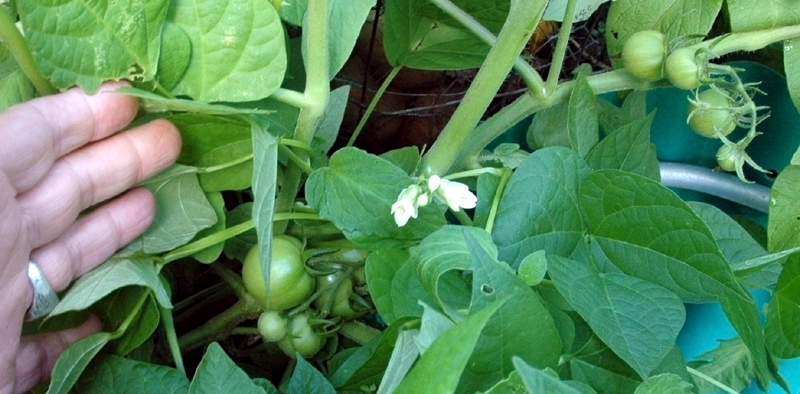 Most guests liked the idea that keyhole gardens eliminate a lot of backbreaking work, like their having to bend way over to work a traditional garden, and most thought the prospect of planting crops close together as a major plus.
Most guests liked the idea that keyhole gardens eliminate a lot of backbreaking work, like their having to bend way over to work a traditional garden, and most thought the prospect of planting crops close together as a major plus.
 I think they were amazed at how thick my gardens were planted with so many healthy crops emerging. This is, of course, due largely to the recycling efforts created with keeping the internal basket fairly full of green-type material (veggie cuttings, rinds, peels, coffee grounds, etc. that would otherwise just go into the trash).
I think they were amazed at how thick my gardens were planted with so many healthy crops emerging. This is, of course, due largely to the recycling efforts created with keeping the internal basket fairly full of green-type material (veggie cuttings, rinds, peels, coffee grounds, etc. that would otherwise just go into the trash).
I am realizing more and more everyday that there is growth in the gardening community, which I think is aided considerably by programs like Master Gardeners.
 There is a significant turn toward yesteryear when people wanted to grow their own crops. A huge advantage in doing so comes with getting to choose when to harvest, when crops are at their peak and have derived the maximum nutrition from the soil. This adds significantly to the taste of the crops and to the nutrition imparted to the consumer. I am also encouraged by schools that are teaching students how to grow crops. It is like riding a bike — it stays with them forever. It is like embarking on a whole new world, one full of challenges and learning, with enormous rewards.
There is a significant turn toward yesteryear when people wanted to grow their own crops. A huge advantage in doing so comes with getting to choose when to harvest, when crops are at their peak and have derived the maximum nutrition from the soil. This adds significantly to the taste of the crops and to the nutrition imparted to the consumer. I am also encouraged by schools that are teaching students how to grow crops. It is like riding a bike — it stays with them forever. It is like embarking on a whole new world, one full of challenges and learning, with enormous rewards.
If you have any questions, please feel free to e-mail me at smith@keyholefarm.com. If you would like to tour our experimental gardens, just call me at 254-652-9483 or drop me an e-mail.